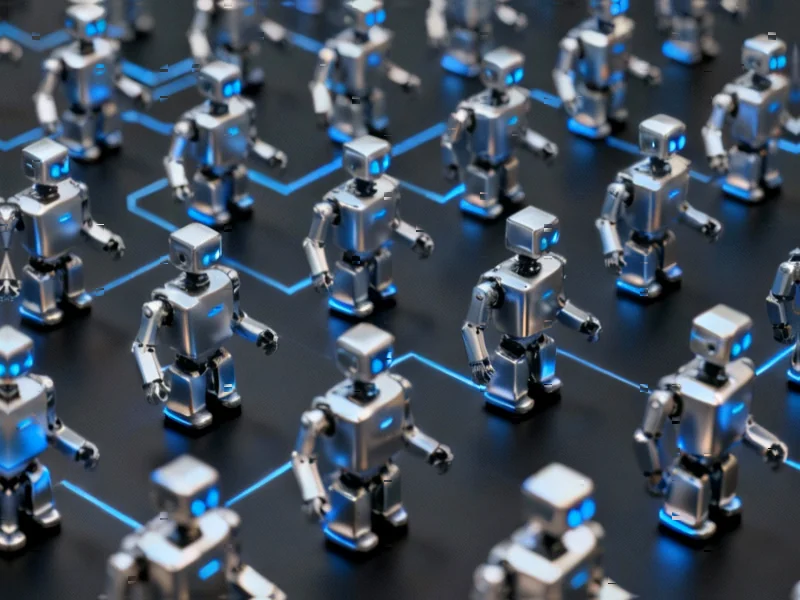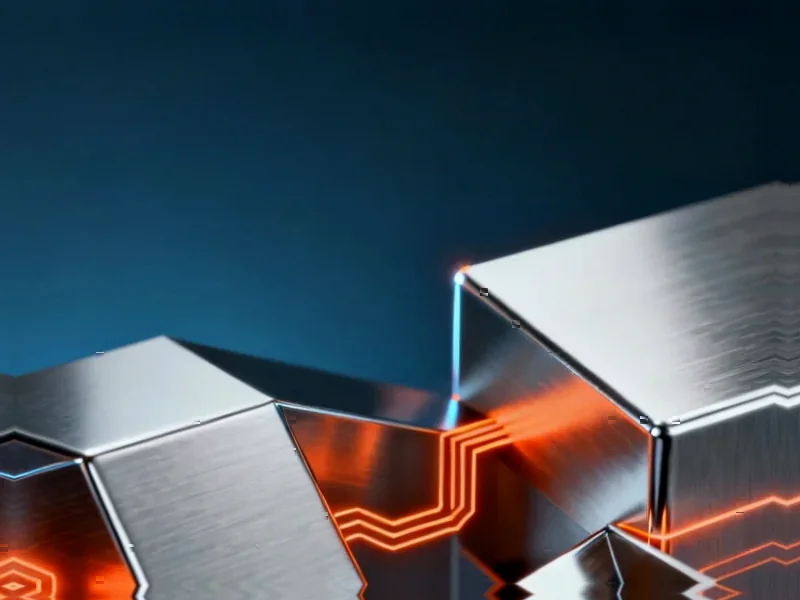The Rise of Distributed Automation
Industrial automation is undergoing a fundamental transformation as companies increasingly adopt distributed robotic systems instead of relying on single, monolithic machines, according to industry analysis. Rather than replacing entire factories with towering robots, progress is reportedly arriving in the form of many modest, specialized actors working in coordination.
Table of Contents
- The Rise of Distributed Automation
- Understanding Swarm Robotics Principles
- Industry Applications Gaining Traction
- Revolutionizing Supply Chain Operations
- Environmental and Agricultural Monitoring
- Search and Rescue Capabilities
- Advanced Manufacturing Approaches
- Digital Swarms Automating Business Processes
- Implementation Challenges and Future Development
Sources indicate that this distributed model trades single-point scale for flexibility, with individual units being inexpensive, easy to update, and capable of working together in patterns that make processes more fluent and adaptive. The global market for these systems is experiencing significant growth, with market research estimating that global industrial automation investment reached $1.03 billion in 2024 and is expected to increase sharply to $9.44 billion by 2033.
Understanding Swarm Robotics Principles
Swarm robotics incorporates multiple simple machines working together using local rules and short-range communication, according to technical reports. While individual systems are limited, together they produce strong, flexible behavior that scales across tasks and environments.
Analysts suggest the core principles driving this approach include:
- Decentralization: Control is distributed across units, eliminating single points of failure
- Local communication and sensing: Bots typically communicate with nearby neighbors using local sensors instead of constant cloud links
- Simple rules, complex outcomes: Straightforward behaviors combine to produce sophisticated group-level capabilities
- Scalable composition: Adding or removing units is designed to be seamless without system redesign
- Emergent fault tolerance: Task sharing means failure of some systems only gradually degrades performance
Industry Applications Gaining Traction
Swarm robotics is emerging in various real-world applications where scale and distributed coverage provide significant advantages, according to deployment reports.
Revolutionizing Supply Chain Operations
Warehouses and logistics networks are increasingly deploying automated systems to handle faster delivery windows and higher order volumes. Analysis suggests that by 2027, over one-quarter of US warehouses will deploy automated systems, with networks of small autonomous mobile robots providing a scalable solution that deploys quickly.
Reports indicate swarms can handle discrete tasks like picking, sorting, short-haul transport, and inventory scans, reducing downtime and enabling incremental capacity additions without facility reconfiguration.
Environmental and Agricultural Monitoring
In agriculture, collective systems of small drones and ground machines are making precision farming more accessible at scale. According to field reports, fleets of aerial drones can map crop health, spot pest outbreaks, and deliver targeted watering, cutting chemical use and saving water.
Simultaneously, ground units perform close-up tasks like weeding or soil sampling. For environmental work, distributed sensors and robot teams can track pollution plumes, monitor wetlands and wildlife, or survey hazardous areas after storms.
Search and Rescue Capabilities
In disaster zones, tiny robotic agents demonstrate particular value because they can fan out and work together to find survivors in unstable spaces. Research indicates that tiny aerial and ground units use local sensing and short-range messaging to construct shared maps and coordinate searches even without GPS.
A recent study reportedly demonstrated how reconfigurable micro-robot swarms can form high-aspect assemblies that enable groups to climb obstacles five times the body length of a single machine, then “hurl” over each other to extend team reach.
Advanced Manufacturing Approaches
Compact units are being tested as a novel approach to additive manufacturing, with teams of small 3D-printing robots or drones carrying extruders or modular tool heads to work together across large areas. Researchers have formalized the “swarm fabrication” concept where numerous simple mobile units form reconfigurable plotters on demand.
This approach allows teams to build parts and components in place rather than moving items to factories, delivering portability and flexibility for complex sites.
Digital Swarms Automating Business Processes
The software equivalent of physical units, digital swarms involve dozens or hundreds of lightweight software bots moving data and decisions across business systems. Robotic process automation enables bots to mimic repetitive human actions, allowing tasks to run automatically and consistently.
Modern deployments reportedly incorporate RPA with orchestration and lightweight artificial intelligence, allowing groups to handle exceptions and prioritize urgent items as demand changes.
Implementation Challenges and Future Development
While swarm robotics offers significant benefits, adoption depends on solving real-world engineering and operational problems, according to technical analysis. Key challenges researchers and operators must address include programming complexity for emergent behavior, communication reliability in noisy environments, power and endurance limitations, and establishing standards and regulations.
Industry sources suggest that improving these technologies and establishing universal standards will be crucial to achieving safer, more effective operations. The future path will involve multiple field tests, rigorous simulations, and technical advances with appropriate governance in place.
With careful engineering and thoughtful implementation, analysts indicate that swarm systems can make automation more adaptable and accessible across numerous industries, transforming how organizations tackle distributed problems from warehouses to disaster zones.
Related Articles You May Find Interesting
- Solar Telescope Reveals Widespread Twisting Waves in Sun’s Corona
- Rigetti Computing Stock Surges on Potential U.S. Government Quantum Investment
- Neural Network Model Predicts Hybrid Nanofluid Behavior for Enhanced Heat Transf
- Advanced MOF-Carbon Nanotube Electrode Enables High-Yield Green Synthesis of Bip
- Dell Tower Plus Emerges as Versatile Prebuilt Desktop for Professional and Gamin
References
- https://www.grandviewresearch.com/industry-analysis/swarm-robotics-market-report
- https://www.eurekalert.org/news-releases/1068081
- https://arxiv.org/abs/2202.10978
- https://revolutionized.com/…/
- http://en.wikipedia.org/wiki/Swarm_robotics
- http://en.wikipedia.org/wiki/Automation
- http://en.wikipedia.org/wiki/Robot
- http://en.wikipedia.org/wiki/Sensor
- http://en.wikipedia.org/wiki/Latency_(engineering)
This article aggregates information from publicly available sources. All trademarks and copyrights belong to their respective owners.
Note: Featured image is for illustrative purposes only and does not represent any specific product, service, or entity mentioned in this article.



